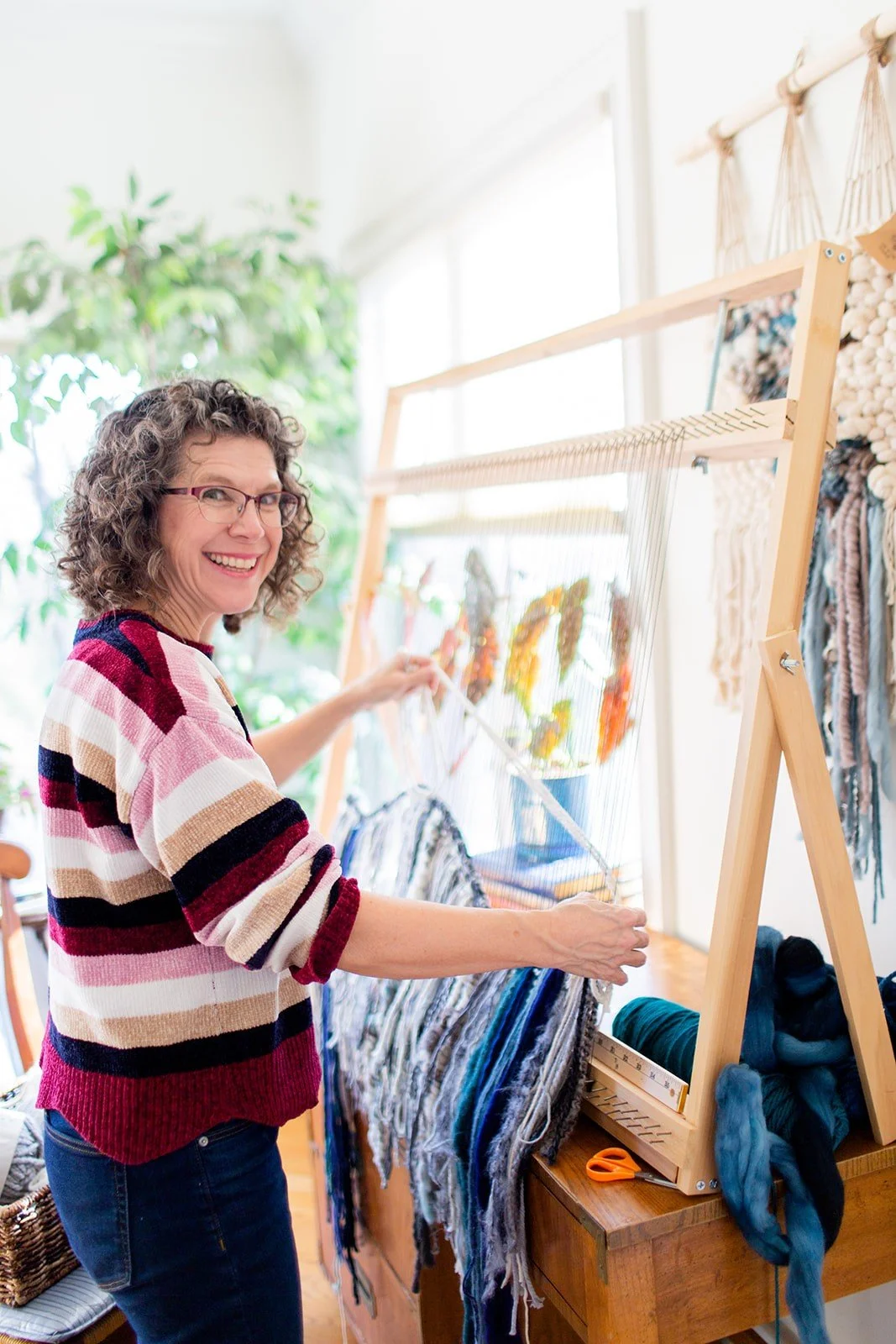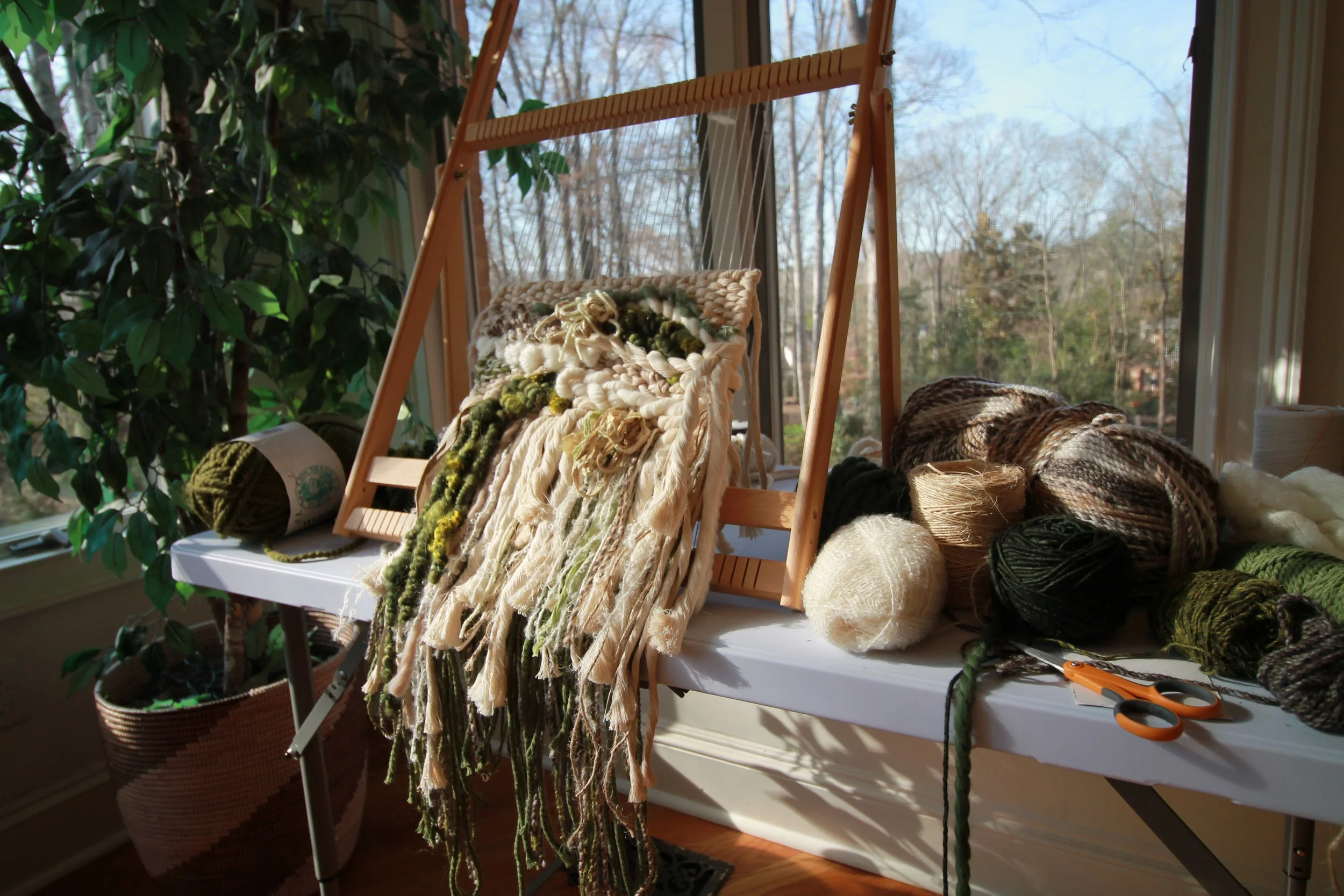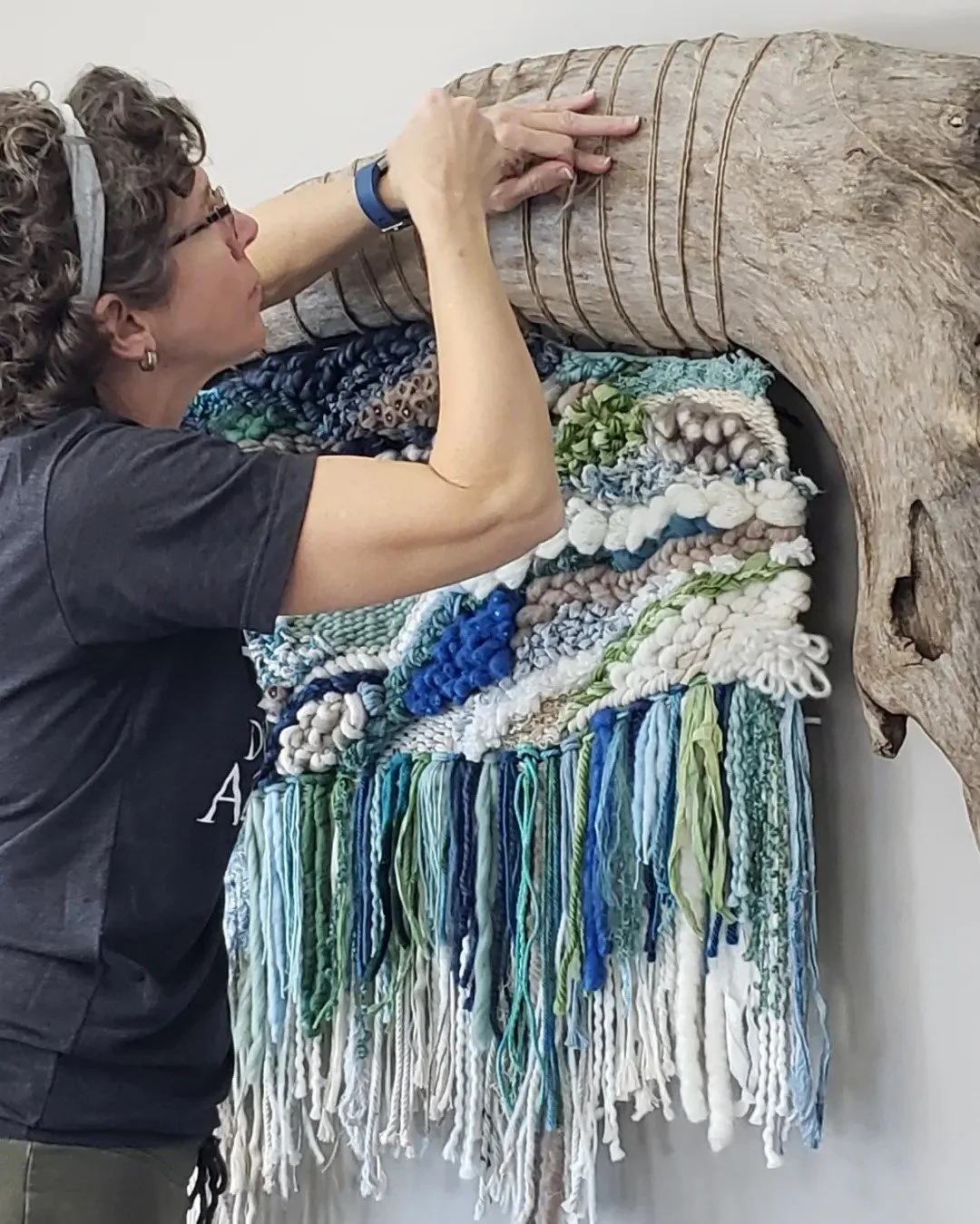The Artist behind the Art
Hi! I’m De’Ette Ray, and I am the face behind De’Ette Marie Art, the weaver behind the weavings, the tapester behind the tapestries. Discovering weaving later in life (I am now a grandmother to 5) has been quite the pleasant surprise for me. As someone who never once held crochet hooks, knotted a single macrame cord, nor purled-one-knitted-two, I had no idea what joy could come from combining different textures and fibers to create something of beauty. Now, it fills my thoughts and dreams! Hand weaving has transformed the way I view both myself and the world around me.
I always believed I was generally creative, but never really thought I had anything to add to the creative chorus in the world around me. Since discovering weaving, though, I feel as if I have found my “voice” - my way of tapping into the beauty that is all around us. Now I see a glorious sunset and I think, “How could I capture that in a weaving?” I read a passage in scripture and imagine what that would look like depicted in yarns and fibers. I look at my circumstances and wonder how to articulate the emotions I feel in a tapestry. God is giving me eyes to see Him and His beauty in this broken world, and also a means of expressing praise and worship to Him for His creation by letting me be a part of creating beauty with Him, for Him. I believe that beauty is one of the ways God tells us He loves us, and getting to be a part of that message in any small way is deeply satisfying. It is a means of beating back the darkness, and I relish having a club in that fight!
I have learned that it is both the depths of sorrow and heights of joy that add richness and texture to this life of now, and I have lived long enough to have experienced each of these. Weaving has given me a creative means to articulate the world around me and the emotions within me. Learning how to depict the richness, the depth, the complexity of life through the combining of beautiful fibers is humbling, exhilarating, satisfying, and fulfilling!
A Peek at the Process
The first step in any of my weavings is to gather my thoughts into a cohesive design that I can then interpret with warp and weft. This often involves a series of sketches, and even working out certain details in smaller weavings before tackling the bigger picture.
Next comes the gathering of fibers. This step is so fun! So many colors, textures, weights and fibers to combine! I love this part!
Then begins the magical step: The actual weaving of the tapestry! Sometimes I follow a fairly set structure for the weaving. Sometimes it is a more organic, free-flowing kind of style. Both approaches bring much fulfillment! It is always a joy to see the finished picture arise from the individual fibers. Every combination leads to a unique, one-of-a-kind weaving, and it is a bit of a surprise every time!
The final step includes all the finishing touches. This involves cleaning up the back of the tapestry, carefully removing it from the loom, attaching to its hanging rod or frame, and any other final touch-ups before sending it to its forever home.
Caring for Your Creation
Your one-of-a-kind weaving is touchable, yet fragile, and your handling of it can affect the longevity of its beauty, so here are a few tips.
Unpacking: Unpack and hang/mount your tapestry as soon as it arrives. While each piece is carefully packed for delivery, it may need a little “fluffing” once you have it installed. You may need to run your fingers through any fringe, and very gently manipulate the fibers themselves by pulling or tugging at individual knots, loops, stitches, or edges.
Cleaning: To clean your weaving, just pat the weaving softly from the back to release dust, as if you were gently beating a rug. You may also want to dust the hanging rod. Do not use any sprays or chemicals, as these may damage the fibers.
Storing: If you have a seasonal piece, you may want to store it regularly. For smaller pieces that hang from rope/string, just hang it on a clothes hanger and cover it with a dry-cleaning bag. If your piece hangs from a rod, it is still best if you can cover and hang it out of the way. If the piece does not have raffia (a hay-like fiber) in it, then it can be covered and carefully rolled up to store.
*Do not roll nativities, as the raffia will bend/curl if stored like this.



